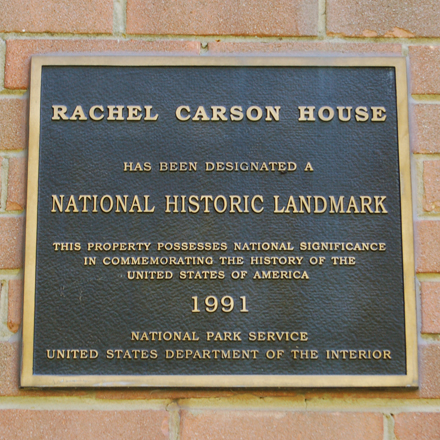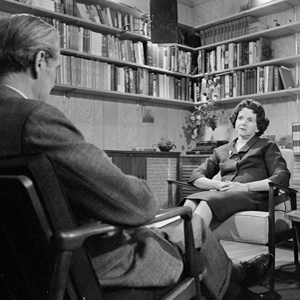About the Landmark

Introduction to the Landmark
Rachel Carson House: Birthplace of Silent Spring
Rachel Carson’s Silent Spring, – the book that helped launch the modern environmental movement and brought about the founding of our US Environmental Protection Agency (EPA) – is considered sufficiently important for the U.S. Department of Interior to designate the house where Carson lived while writing it as a National Historic Landmark – among the highest honors that can be given to a historic site. The official plaque states: “The Property Possesses National Significance in Commemorating the History of the USA.”
Rachel Carson occupied this property on Berwick Road in Maryland from 1957-1964.
She began the research and writing of Silent Spring in 1958. For the next four years the subject matter called for intensive review of scientific and public documents in addition to correspondence with scholars and workers. Silent Spring was published in 1962.
In the two years after Silent Spring appeared, Rachel Carson was favored with a level of praise and prominence that few Americans ever experience (see footnote). Many awards, invitations to speak and letters followed. At the house: the famous photographer, Alfred Eisenstadt, took pictures of her for a Life magazine feature article, “The Gentle Storm Center.” The highly regarded CBS newsman, Eric Sevareid filmed a wide-ranging interview with Rachel Carson in the study of her house for a CBS Reports TV program on the issues raised in Silent Spring. The interview appeared in a nationwide 1963 broadcast as “The Silent Spring of Rachel Carson.” To this day it is regarded as an outstanding example of investigative reporting. The evidence presented validated her position.
During much of her time in the house Rachel Carson suffered with health problems which became more serious with each passing year, a fact she shared with only a few of her closest friends. Despite rigorous treatment and Carson’s courageous struggle, cancer and associated complications resulted in her untimely death in 1964 at age 56.
Note: The Berwick Road home is the only Maryland residence owned by Rachel Carson during the thirty-plus years she resided in the state. The house was custom built to her specifications in 1957 and is currently the headquarters of Rachel Carson Landmark Alliance (RCLA)
Detailed history of the Rachel Carson House still under development.
Footnote: Supporters of Silent Spring consisted of many ordinary people, scientists, and government officials and organizations; there were, however, detractors representing such groups as The American Chemical Society and the National Agricultural Chemicals Association (a predecessor of CropLife America). A stunning turnaround in each organization occurred during 2012 with a statement favoring Silent Spring from CropLife America (Keller, D., “Silent Spring Turns 50,” The Progressive Farmer, Feb 2012) followed by the American Chemical Society awarding Landmark status to Silent Spring for leading to, “…a paradigm shift of great significance that set the stage for the more sustainable science we practice today.” (Wang, N., “Landmark for Silent Spring,” Chemical & Engineering News)


